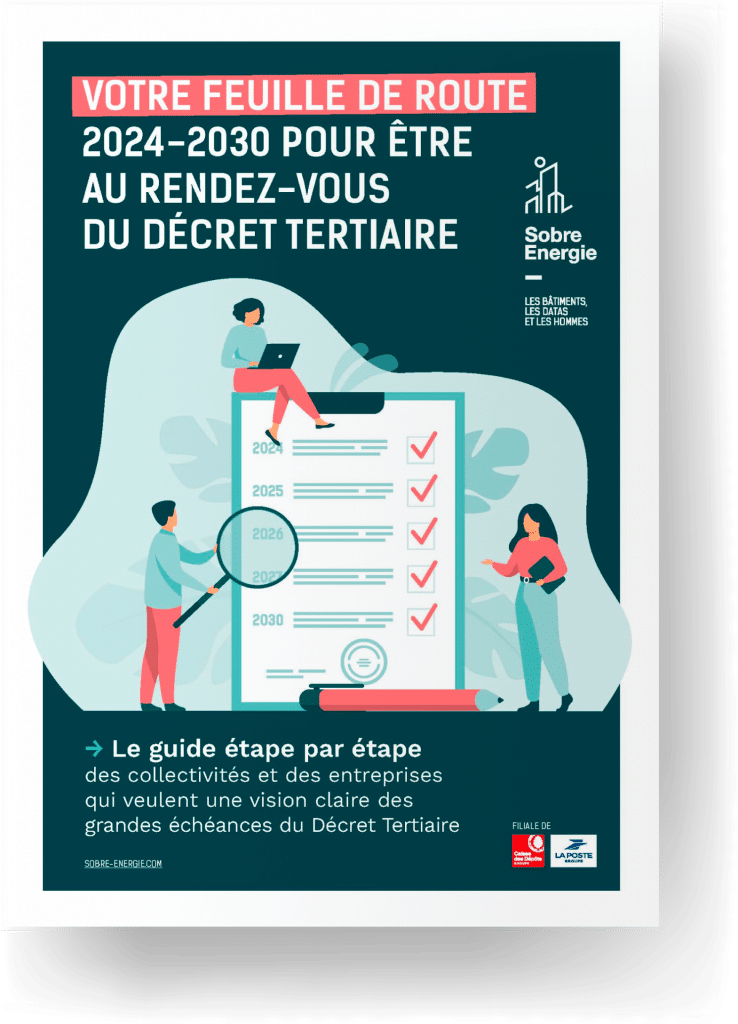Owners, asset managers, property managers, the observation is the same for everyone: in 2022, energy has become a key issue for managing your real estate portfolio.
Under the effect of three complementary levers:
- Strong tensions on energy prices: +330% for the price of electricity increased from €50/MWh at the start of 2021 to €222/MWh in December 2021
+ 300% between January and October 2021 for the price of natural gas increased from €15/MWh to €60/MWh in October 2021. And the trend will remain upward in the medium term. According to Ademe , the cost of gas will be doubled again by 2040 (120€/MWh)
- Growing regulatory pressure: entry into force this year of the tertiary eco-energy system (1st declaration on Operat as of September 30) and the RE 2020 for new buildings.
- Strengthened CSR impact for organizations: 2022 marks the emergence of a new European taxonomy in extra-financial rating.
Are you sure you know the fundamentals of the Tertiary Decree? 5 preconceived ideas deciphered
Thus, measurement is today essential to know the state of consumption of its real estate portfolio. Measure and then control this consumption with action plans to reduce it.
Tertiary Decree and DEET Rating
Every year, a tertiary eco-energy certificate will be issued to each taxable person to reflect progress towards its objective of reducing energy consumption.
This note will include the results of the functional entity on the front and the aggregation of the results on the scale of the entire building on the back. That is to say with the results of each functional entity matched with its surface. Thus, according to the Ministry of Ecological Transition, if a functional entity is noted with an orange sheet, for example, it will seal the building. But seeing that others have obtained a green leaf will prove that the building is performing well. And therefore it is an operating problem.
What consequences?
The annual tertiary eco-energy rating will be appended to the building's sales and rental documents. This is a very strong element of the future lessor/lessee relationship, according to Marc Lereau, project manager “Energy management and thermal regulation of existing buildings” at the Ministry of Ecological Transition. “On the one hand, the lessee may wonder whether he is renting in a poorly operated building. On the other hand, a lessor will be able to check whether the lessee operated his previous entity well and provide an additional rent if this is not the case in the new lease. »
Respecting the trajectory of reducing consumption is therefore an element of valuing or not the real estate stock in the future.
-10% consumption in kWh in 3 years, we did it with the Post Office:
Green lease and landlord/tenant relationship
For buildings subject to the tertiary eco-energy system, energy measurement is therefore at the heart of the relationship between owners and tenants.
The decree provides that owners and tenants are both subject to and affected by energy performance efforts. They must communicate to each other the final energy consumption of the equipment they operate.
Transparency logic
It is therefore important to put in place good governance between owners and tenants now in order to set the roadmap for 2030:
- Define a consumption reduction trajectory
- Specify the responsibilities of each stakeholder (lessor, single or multiple lessee, syndicate or co-ownership association)
- Anticipate the budgets to be put in place
- Integrate monitoring and action plans into your organizational matrix
This roadmap is made contractual through an environmental annex to the lease, called a green lease.
The energy performance project manager, daily pilot of the consumption reduction trajectory, must be fully integrated into the green lease monitoring committee.
As an external trusted third party, he will guarantee compliance with the objectives set.
To find out more about our platform and energy management
Energy measurement and European taxonomy
Finally, energy measurement is a key constituent element of an organization's extra-financial performance. In 2022, the time has come for the new European taxonomy:
In December 2021, the commission published the delegated act giving rise to the European taxonomy: a science-based framework, which lists all the technical characteristics of activities that make it possible to achieve the European carbon neutrality objective or contribute to achieving it .
88 activities concerned belonging to the highest emitting sectors
These activities are divided into 3 categories:
- Firstly, “sustainable” activities. That is to say, neutral or low carbon activities, which respect the thresholds defined in the taxonomy.
- Then, “transitional” activities , for which there is not yet an economically or technologically viable low-carbon alternative.
- Finally, “enabling” activities , which allow activities other than themselves to contribute to the achievement of one of the six environmental objectives (for example, a company specializing in geo-energy).
Sustainable building measurement criteria
A building will be defined as sustainable if it dates from before 2021 and is in compliance with the BACS decree, and presents:
- A Energy Performance Diagnosis (DPE) , expressed in primary energy .
- Or failing that, is part of the 15% of the national or regional real estate stock with the best performance primary energy consumption .
To integrate this taxonomy and maintain the valuation of your real estate portfolio, the roadmap is clear: establish an energy audit to know its consumption, set up an energy management system and a reduction trajectory from now on.
🤖 Summarize this article with an AI
Click on a button to automatically sum up this page with the AI of your choice.

